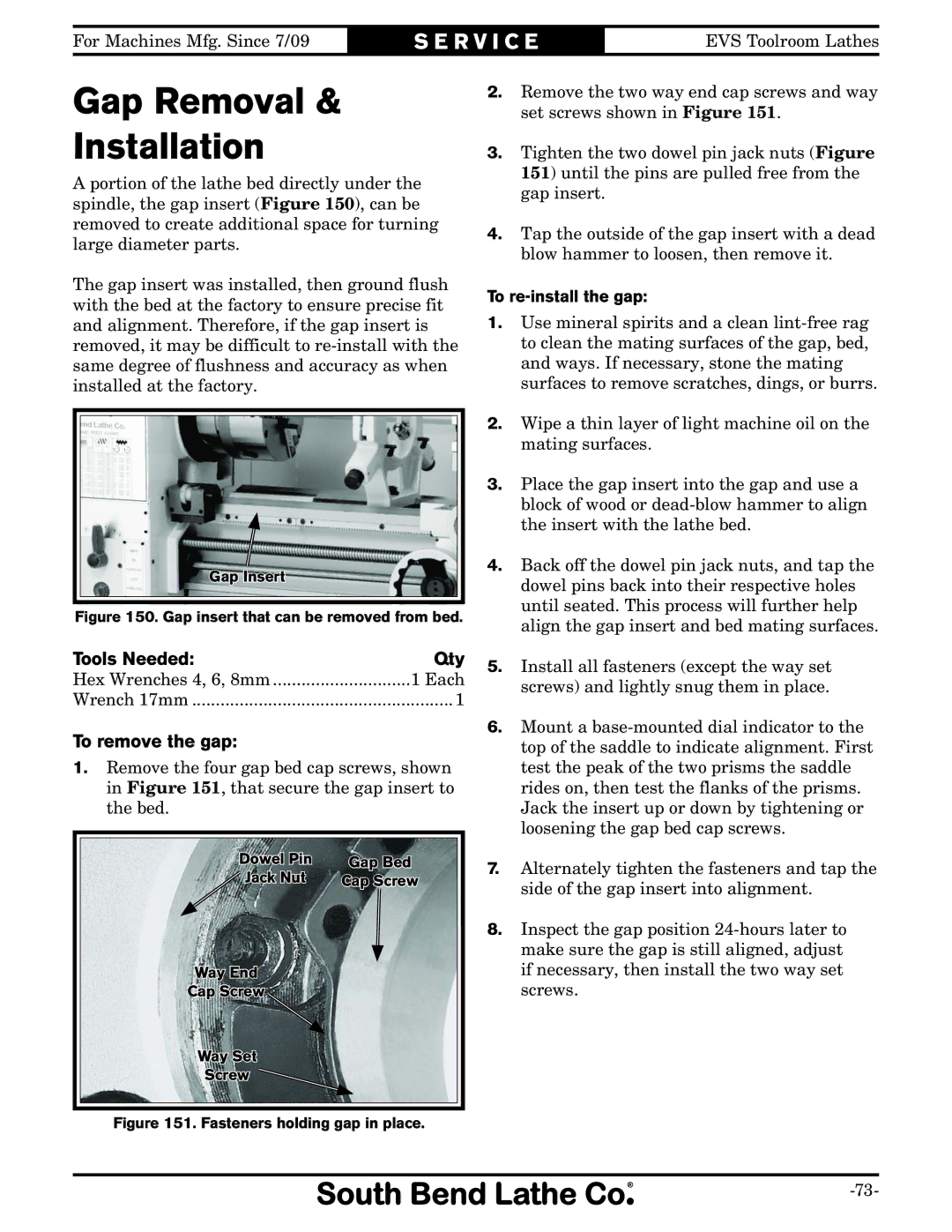
For Machines Mfg. Since 7/09 | S E R V I C E | EVS Toolroom Lathes |
Gap Removal &
Installation
A portion of the lathe bed directly under the spindle, the gap insert (Figure 150), can be removed to create additional space for turning large diameter parts.
The gap insert was installed, then ground flush with the bed at the factory to ensure precise fit and alignment. Therefore, if the gap insert is removed, it may be difficult to
Gap Insert
Figure 150. Gap insert that can be removed from bed.
Tools Needed: | Qty |
Hex Wrenches 4, 6, 8mm | 1 Each |
Wrench 17mm | 1 |
To remove the gap:
1.Remove the four gap bed cap screws, shown in Figure 151, that secure the gap insert to the bed.
Dowel Pin | Gap Bed |
Jack Nut | Cap Screw |
Way End
Cap Screw
Way Set
Screw
Figure 151. Fasteners holding gap in place.
2.Remove the two way end cap screws and way set screws shown in Figure 151.
3.Tighten the two dowel pin jack nuts (Figure 151) until the pins are pulled free from the gap insert.
4.Tap the outside of the gap insert with a dead blow hammer to loosen, then remove it.
To re-install the gap:
1.Use mineral spirits and a clean
2.Wipe a thin layer of light machine oil on the mating surfaces.
3.Place the gap insert into the gap and use a block of wood or
4.Back off the dowel pin jack nuts, and tap the dowel pins back into their respective holes until seated. This process will further help align the gap insert and bed mating surfaces.
5.Install all fasteners (except the way set screws) and lightly snug them in place.
6.Mount a
7.Alternately tighten the fasteners and tap the side of the gap insert into alignment.
8.Inspect the gap position
